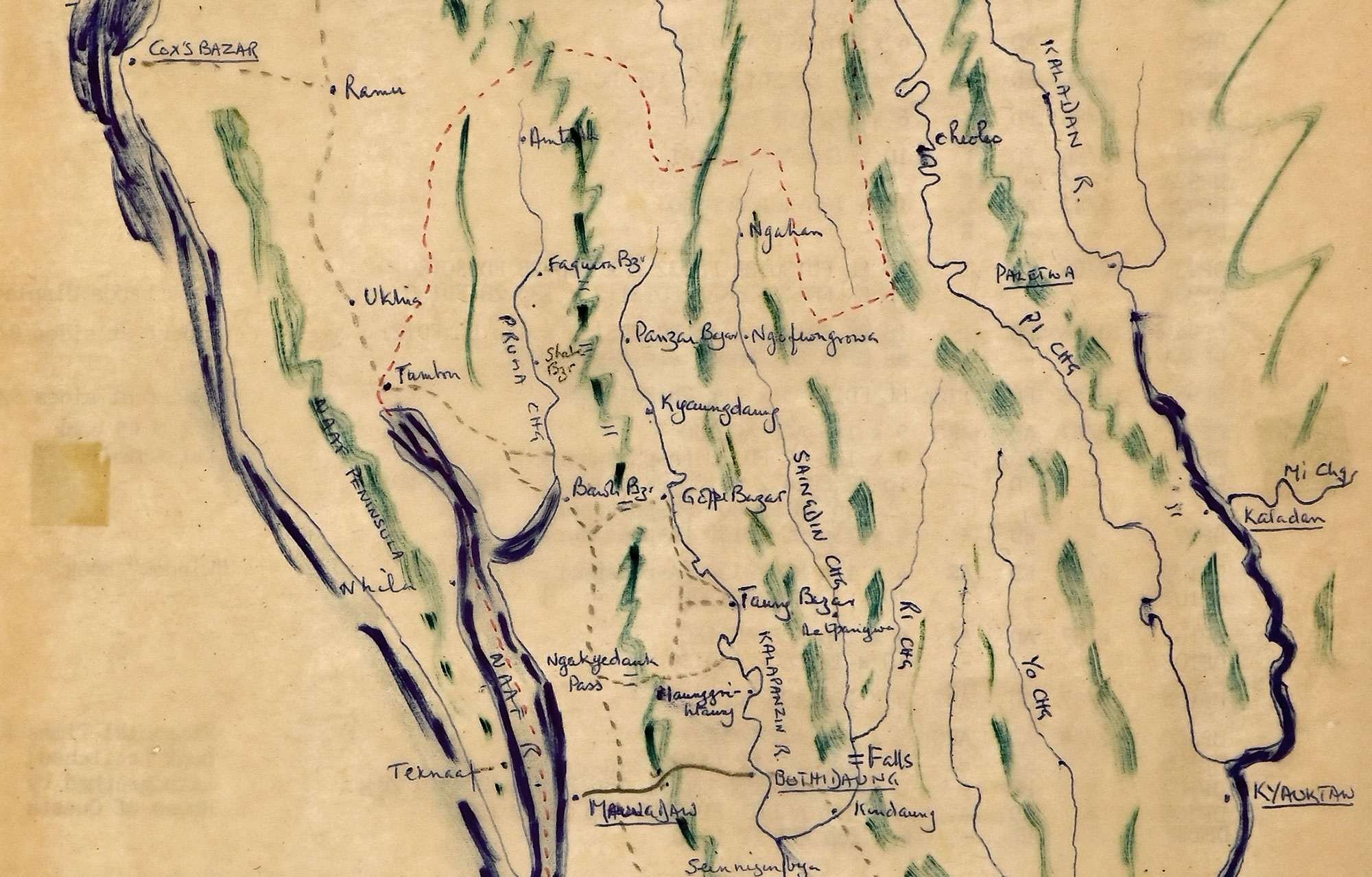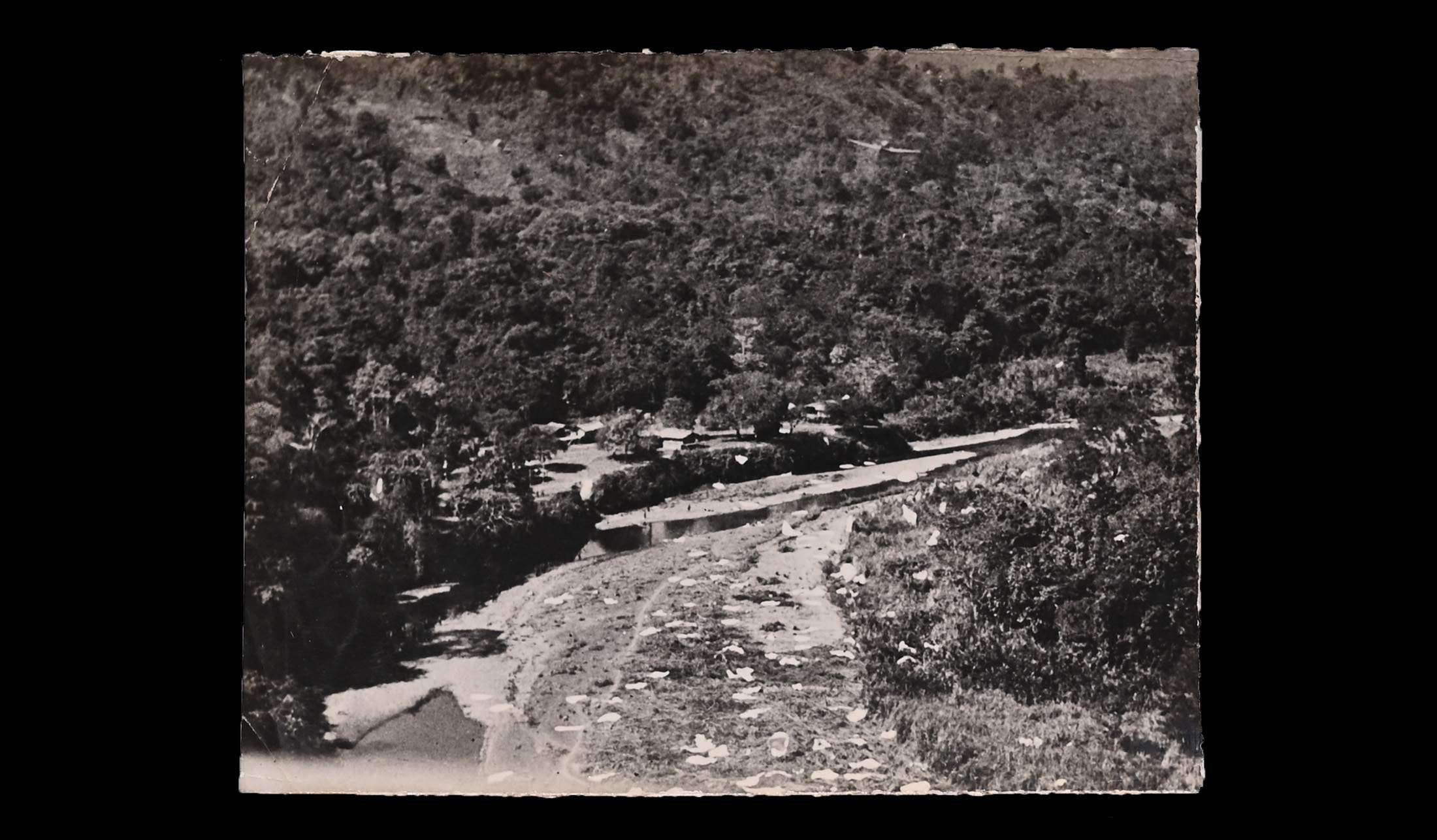
Patriot, Inspector, Innovator
The Story of Mohammed Imam Hussain
PART 1
Family photographs, documents and writings courtesy of the family of Mohammed Imam Hussain
The idea for TRAILBLAZERS was created by Haikal Mansor
In October 2016, at the age of 90, Mohammed Imam Hussain wrote page after page detailing significant moments in his life. From his time serving for the British in “V” Force against the Japanese during WWII and being seriously wounded on the first day of the pivotal Battle of Ngakyedauk Pass in north Arakan (also known as the Battle of Admin Box) to the pioneering inventions and patents he received while living in exile in the United States for most of his adult life. His story is of a Rohingya man deeply committed to his community, his family and to learning and discovery. Imam Hussain’s story spans decades as well as continents. For TRAILBLAZERS, his story is divided into two parts. Each representing a significant period in his long life. In both parts, we use Imam Hussain’s actual handwriting from these pages to guide us through some of these moments in his extraordinary life.
In December 2016, two months after writing his brief biography, Mohammed Imam Hussain passed away.
Mohammed Imam Hussain was born on January 11, 1926. He is also known to many by his nickname, Imam Darga, or Inspector Imam. Originally from Kayandan Village (Shidda Para) outside the border town of Maungdaw in northern Arakan, Burma, he grew up in one of the most heavily administered areas of British colonial Burma. Knowledge and education propelled him from one stage of his life to another. As a young student he went to school and performed his chores during the day and then studied by candlelight in a hut in the rice paddy fields at night. He attended the Government State School in Maungdaw, scored the highest marks in his exams and became proficient in English.
Imam Hussain as a young man. This photograph was taken sometime in between 1944-47. Location unknown.
In April 1942, the British Army established the “V” Force guerrilla unit in Arakan to help defend India against the advancing Japanese army. “V” Force consisted of ‘British officers who relied on local inhabitants as intelligence agents.’ These local inhabitants worked behind Japanese enemy lines and provided intelligence to the British about Japanese troop positions and movements. In some situations, they fought in raids and ambushes.
During the intense years of Japanese occupation of Arakan in WWII, Imam Hussain served as an interpreter and intelligence agent in “V” Force. He was posted mostly in the Taung Bazar area of Buthidaung.

Hand drawn map of North Arakan in 1944 during WWII by British officer Peter Murray. The map includes Maungdaw, Buthidaung, Taung Bazar and Ngakyedauk Pass.

Two men carry a wounded Rohingya ‘patriot’ from “V” Force in 1943. (as written in caption on back of photo)
On February 5, 1944, the Japanese made a surprise attack on British positions of the 7th Division in Taung Bazar in the northern Arakan area of Burma. The Japanese surrounded the British troops in the area and cut them off from ground supplies. A fierce battle followed for the next two weeks. On the first day of the battle on February 5th, a British soldier, Imam Hussain and two other Rohingya men serving for the British were assigned to find and recover cash money boxes and important documents at a supply depot several miles away from the Division HQ in Taung Bazar. The remote position had been totally deserted during the Japanese attack. As they were searching for the items during the mission, an ‘earth shaking thunderous explosion’ instantly killed one of the Rohingya men. Imam Hussain was standing a few feet behind the man. He was seriously wounded by shrapnel from the blast. Laying on the ground, he watched the other men run away and thought they had abandoned him. However, they returned, removed him from the blast site and took him to a field hospital.
Over the next two weeks in February 1944 and against all odds, British forces (including “V” Force) defeated the Japanese in the the Battle of Ngakyedauk Pass or ‘The Battle of Admin Box’. It was the first major defeat of the Japanese in Burma. Some historians say the defeat was a turning point in the war in Southeast Asia.

A photograph of aircraft dropping supplies by parachute to ‘V’ Force soldiers from the British 7th Army who were surrounded by the Japanese in Taung Bazar during the Battle of Ngakyedauk Pass or ‘Admin Box’.
Because of his serious injuries, the British transported Imam Hussain to a hospital outside of Delhi for medical treatment. After four months of recovery in the hospital, he was brought back home to Arakan. Once the war was over, he worked in the intelligence unit as a Sub-Inspector for the Burma Police Force and was highly respected in his position.
As a young man, Imam Hussain worked as a Sub-Inspector in the Intelligence Unit for the Burma Police. This photograph of Imam Hussain was taken on May 5, 1945 at the Buthidaung Police Station.
A photograph of Imam Hussain taken sometime between 1945-47 at the Myoma Police Station in Akyab (Sittwe) and a copy of a Good Service Certificate awarded to him on October 21, 1946 for his investigation work in the Police Force. The certificate was awarded by the District Superintendent of Police in Akyab (Sittwe).
Imam Hussain (seated on the left holding his British-issued pith helmet) and with a bicycle while serving in the Burma Police after WWII. Both of these photographs were taken on March 8, 1947.
Following the Burma Independence Act of 1947, Burma became an independent nation in January 1948. From 1947-1949, ethnic interests increasingly shaped Burma’s politics. Both the Rohingya and Rakhine Buddhist communities began to take action to secure their own agendas. Ethnic insurgencies were raging across the country, including in Arakan. Discrimination against the Muslim community also increased in Arakan during this time. This discrimination and mistreatment led to Imam Hussain resigning from the police force in 1948. For security reasons, he fled to East Pakistan (Bangladesh). After some time, he traveled to Karachi, Pakistan. He attended the Aleem Technical Institute in Karachi where he studied Radio Servicing and received a diploma as a Wireless Engineer in 1953. Then he attended the Sind Muslim Government Science College. He was in one of the first graduating classes to complete their studies at the school.

In the early 1950s, Imam Hussain attended Sind Muslim Government Science College located in Karachi.

On March 26, 1955, the first lady of Pakistan, Mohtarma Fatima Jinnah, presents Imam Hussain an award for achievement in academics at the Sind Muslim Government Science College. (handwriting found on the back of the photograph is included here.)
In the summer of 1955, at the age of 29, Imam Hussain left Pakistan. He traveled by boat to the United Kingdom, and on August 30th, 1955, he boarded the passenger ship SS Liberte in Southampton, England. The journey took him to New York City. He arrived in the United States on September 2, 1955. His destination was Fort Wayne, Indiana. He was one of the first members of the Rohingya community to resettle in the United States. It is said he arrived in the United States with $2 USD in his pocket.

Manifest paperwork of In-bound passengers record Imam Hussain’s journey on the SS Liberte from the UK to NYC in 1955. Ft. Wayne, Indiana was his recorded destination.
From Arakan, to West Pakistan, to Karachi, the journey to the United States in 1955 was more than a new chapter in Imam Hussain’s life. He married, and he and his wife, Jomilah, who was also from a Rohingya family in Arakan, would start a family together. For the rest of his life in the United States, he would continue his pursuit for excellence in innovation and scientific knowledge in newly emerging digital technologies. Though his homeland of Arakan and Burma were thousands of miles away, his commitment to community and the Rohingya struggle for freedom, recognition and justice were always present in his life.
Read PART 2 HERE
The project Ek Khaale extends its deepest gratitude to the family of Mohammed Imam Hussain.


















